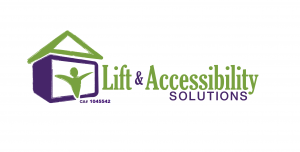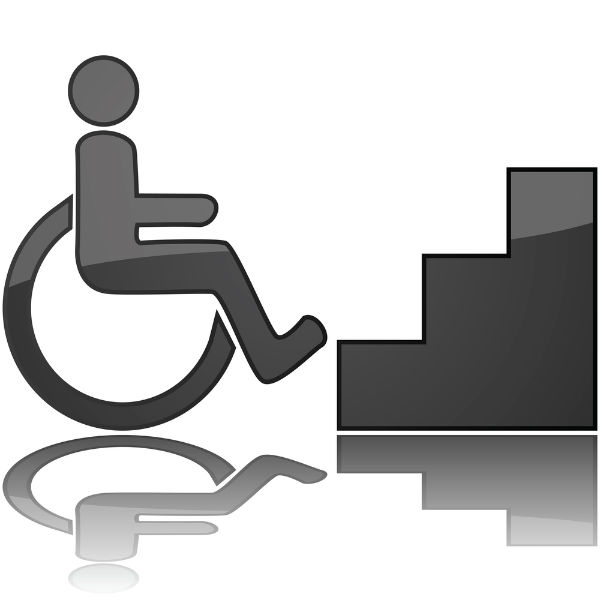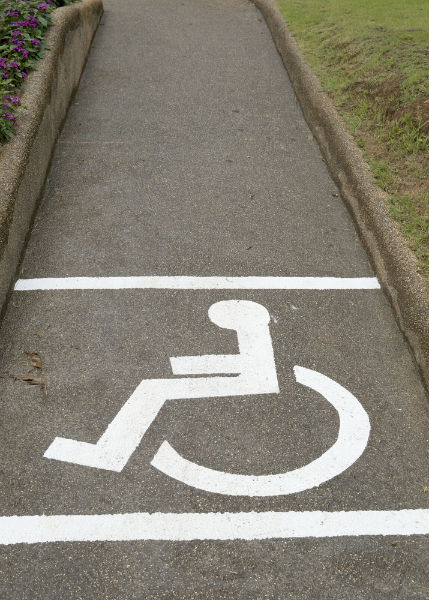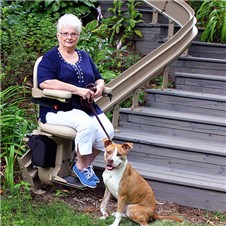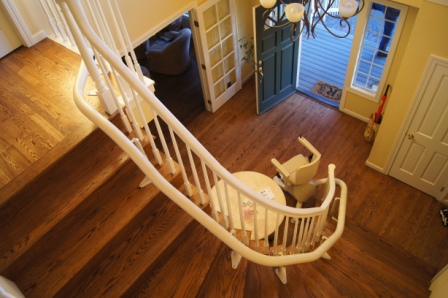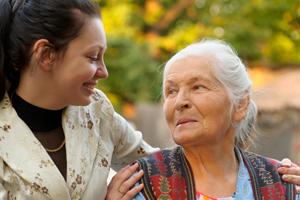13 Jun / 2016
What Businesses Should Know About ADA Compliance
The Americans with Disabilities Act (ADA) is a Federal law that first went into effect on January 26, 1992. Under this law, it is prohibited to exclude people with disabilities from performing everyday activities. These activities include going to a movie, dining in restaurants, shopping, and access to all public businesses. Recognizing that many small businesses could face financial hardship to comply with the ADA, lawmakers had the foresight to make the requirements for facilities built before the law less strict than the requirements for businesses built or modified after the law went into effect.
So what should businesses know about ADA compliance? Since all new buildings are constructed with ADA considerations in mind, let’s look at any existing business facilities. For this discussion, any business that provides goods and/or services to the public falls under the ADA. To comply with the ADA, businesses must remove physical barriers which would exclude disabled people from gaining access to the business. Enforcement of the ADA is typically based on the resources of the business. A business with large cash resources would be required to meet all aspects of the ADA in a timely manner. Small businesses with limited resources are required to meet the requirements of the ADA as they can afford to pay for them. Here is a list of the six major items required to comply with the ADA in order of importance:
1) Accessible Parking – The first thing businesses should look at is van and car parking spaces for disabled customers. They should allow enough room for wheelchair entry and exit from the vehicle.
2) Accessible Entrance – The main consideration here is stairs or steps. If there are one or more steps to enter the business, a ramp or lift must be provided to help disabled persons access the business.
3) Entrance Doorways – All entrances to a business should have doorways that are a minimum of 36 inches wide to allow wheelchair access, and the doors should also have loop or lever-style handles instead of knobs to be in compliance.
4) Shelves/Maneuvering Space – After you have provided access inside your business, consider the space required to maneuver wheelchairs or other assisting devices around. Widen aisles where necessary and allow enough space to turn.
5) Sales and Service Counters – Counters that are 36 inches long and 36 inches or less in height are ADA compliant.
6) Seating and Tables – Fixed tables must be provided in an eating area that meet the following requirements:
- Height – 28-24 inches
- Knee Clearance Height – 27 inches’ minimum
- Floor Area – 30 inches by 48 inches
- Knee Clearance Depth – 19 inches minimum under the table
The ADA was signed into law to allow the 50 million plus disabled Americans access to public businesses that most people enjoy. All public businesses must comply with the ADA in the best way they can without financial hardship. Remember these six considerations, and if you need any assistance, contact an accessibility solutions company.
13 May / 2016
Is It Time for a New Medical Scooter or Wheelchair?
If you’ve had your current scooter or wheelchair for a while, you’re probably accustomed to it and don’t see a reason to change. After all, you’re comfortable with how it works and how you feel in it, so what’s the rush to get something new? However, situations arise eventually where your current scooter or wheelchair may not fit your needs anymore, or where it breaks down and needs to be replaced. How do you know if it’s time for a new scooter or wheelchair? Some of the following may help you to decide: is it time for a new medical scooter or wheelchair?
1. The scooter or wheelchair is broken.
This is the most serious reason to need a new scooter or wheelchair, as it means that you can’t physically be mobile anymore until you get it replaced. Signs that your mobility device may be broken (or on the verge of breaking down) include reduced speed, inability to start, or strange noises that are coming from its engine or wheels. Before you decide to get it replaced, you should check with a technician who can confirm what the problem is, however.
2. The scooter or wheelchair is worn down.
Sometimes, even if your device isn’t actually broken, it may be worn down enough that you still want to replace it with a new one. That’s partly because being worn down shows that it’s on the way to breaking, and you’ll have to get a new wheelchair or scooter eventually anyway. Another reason is that you may just be tired of using an old device, and want something that’s newer and more comfortable. Especially when newer models come with updated features, you may find that this appeals to you more than keeping your old scooter or wheelchair.
3. You experience personal changes.
If you go through changes in a medical condition, or simply personal changes (such as weight gain or weight loss), you may require a different device that allows you to be more comfortable. For example, you may find that you need to switch from a wheelchair to a scooter, or vice versa. This can also apply to living changes, such as moving – some living spaces may not be large enough to accommodate certain scooters or wheelchairs, and as a result you may need a different model instead.
02 May / 2016
5 Tips for Making Bathrooms Safer for Seniors
Whether you are taking in your older parents who need a little extra assistance, or you have found yourself struggling to move about with ease, there is plenty of help available to you. There are a number of small safety devices you can add to your home or even to your bathroom, a dangerous environment even when you have a perfectly healthy body. So here are just a few extra ways to make your bathrooms safer for those who need just a little extra assistance.
1. Support Bars. No assistance-friendly bathroom could hope to call itself as such without support bars everywhere. Support bars provide a solid point of help to anyone who needs them. It’s a good idea to have one next to the toilet and one in your shower, at the very least. It is best to always install your support bars horizontally because diagonal bars can actually increase the chance of someone slipping.
2. Skid proof trouble surfaces. We’ve all slipped while stepping out of the bathtub before, it’s as inevitable as taxes. It is an excellent idea to be sure and skid proof your bathroom. Get rubber mats with slip-resistant surfaces to help reduce the chance of slips when you step out of the shower. Another good product to get is safety treads for the tub itself. These are relatively inexpensive and take only a few minutes to apply to the bottom of your tub. These add texture to the tub’s otherwise slick surface and they will significantly reduce the chances of anyone having an accident.
3. Shower seat. This is typically just a small, fold-out bench that can be anchored directly to the wall and then unfolded when needed. This accommodating bench will be great for those who cannot stand for long periods of time. There are also shower chairs for a removable option.
4. Raised toilet seats. Often it is difficult for seniors to lower or raise themselves any sort of significant distance. One thing to consider is that toilet seats are often fairly low. You may want to look into getting safety equipment for your toilet, especially a raised seat that will add several inches to the toilet, making it easier for you senior to access. These toilet boosters usually include additional safety railings for installation immediately around the toilet itself, rendering further aid.
5. Adequate Lighting. This may not immediately grab your attention as being a safety requirement. However, adequate lighting can go a long way toward helping seniors who may not be able to see as well. Good, strong lighting will help them to be able to see any obstacles in their way and more easily see the edges of any steps or rugs.
18 Apr / 2016
Outdoor Activities for Seniors
Spring is finally here in Sonoma County! With nicer weather comes the opportunity to enjoy getting outside. Fresh air and sunshine bring joy to people of any age. Getting outdoors improves your mental health and well-being. Whether you’re still active and can walk five miles a day, or you require more stationary activities, there are a ton of things to do outdoors. Of course, your ability to partake in certain activities depends on your health and mobility, but the possibilities for outdoor activities are endless. Let’s take a look.
Classic Games
Why not bring your favorite indoor activity outdoors instead? Find a table at a local park or your senior living facility and bring a deck of cards, checkers, or your favorite board game to play with your family and friends. Turn it into a picnic by packing sandwiches, snacks, and drinks. This gives you an opportunity to enjoy good weather, but also spend time with the people that you love.
Gardening
Don’t have a green thumb? That’s ok! You can still enjoy gardening even if you are not an experienced gardener. Planting flowers or vegetables is an easy, relaxing activity that lets you design a small garden and nurture it throughout the summer. Your local garden shop can help you choose the best plants or vegetables based on the amount of sun or shade in your garden and teach you how to plant them.
Soak up the Sun
Enjoy a walk around your neighborhood or walking trail at your local park. Walking helps to keep your muscles moving, elevate your heart rate, and enables you to enjoy the sights and sounds of your surroundings. Maybe you can walk to your favorite local coffee shop for a quick cup, or you can stop and listen to a local band playing in the park. Some cities have outdoor venues that hold concert series in the summer. All you need is a lawn chair or portable seat if you can’t sit on the ground!
Get Inspired
Grab a canvas and some paints and try painting the scenery of your location. Even if you’ve never done that before, don’t be afraid to try something new. You might find a new passion!
Not only is being outdoors fun, there are also proven physical and mental health benefits. Getting Vitamin D is essential to maintaining a healthy immune system, artificial light may impact nearsightedness, and exposure to natural light improves sleep, just to name a few. So why wait? Let’s get outside!
Part of the aging process means accounting for physical changes that can reduce one’s mobility. Whether individuals decide to age in an assisted living facility or in their homes is dependent on costs, needs and resources. The decision to remain in one’s home often means changes must be made to accommodate safety and accessibility. Contractors and companies that specialize in making homes accessible and safe for aging seniors can help. Living in one’s home throughout the aging process does not have to become an impractical choice or beyond one’s financial reach. Although needs may change, simple and affordable home modifications can make it easier to live safely. The following represents the top things seniors and their loved ones should consider before making structural changes to their homes:
1. Needs: What are your specific concerns and needs related to safety and accessibility? Seniors that use a wheelchair or walking equipment will likely need to replace stairs with ramps or stair lifts for greater accessibility. Consider whether it makes practical sense to make changes to any outdoor or indoor stairwells. What areas of the house will you continue to use? Some seniors decide that replacing an indoor staircase with a ramp is unnecessary if they do not need to gain access to specific portions of the house. For instance, a live-in caregiver may reside within the areas that are accessible via the staircase and the separation will serve both parties well.
2. Costs: What will it cost you to make the necessary changes to your home? Will you need financial assistance? It is best to make a list of the changes you will need to make and get an estimate from a licensed contractor. If the changes involve the purchase and installation of stair lifts, decks, ramps, support bars, and elevators, research the anticipated costs with several companies. These types of changes can range from hundreds to thousands of dollars. Several agencies and volunteer organizations, such as the Area Agencies on Aging (AAA), may be able to provide financial assistance. Mortgage lenders may also offer products that can supply funds to pay for upgrades.
3. Modifications: Does carpet need to be removed and replaced with a slip-resistant alternative? Is any laminate or wood flooring potentially unsafe? Sometimes simple changes such as a rug will do the trick. Do the bathrooms need to have support bars or special tubs and showers installed? Do doorknobs and handles need to be replaced with arthritis-friendly levers? These are questions about modifications you will want to ask before contracting any work that needs to be done. It is best to list all modifications ahead of time so that all equipment and work that needs to be completed can be done at the same time.
Overall, these are some things to consider when making your Santa Rosa, CA home more accessible to seniors. Whether you are making changes to your home for yourself or for your loved ones, think about the needs, costs, and modifications involved so you can be fully prepared.
03 Mar / 2016
Stair lifts: They’re More Versatile Than You Think
Everyone’s familiar with stair lifts as helpful devices that allow people with difficulty walking to be able to ascend and descend the stairs in their home. A stair lift is a chair with an electronic mechanism that pulls it (and its occupant) up or down a flight of stairs, and is especially helpful for people with a physical disability or illness, such as arthritis, to be able to continue living in a home that has stairs, even if they are unable to walk up or down without assistance.
However, what few people recognize is that stair lifts can be used to move more than just people – in fact, they are incredibly versatile and helpful for people who struggle to ascend or descend a flight of stairs for any reason. Take a look at the various ways a stair lift can be used in a home, besides just for helping move people:
-
Travel
Homeowners who live upstairs can use the stair lift to move luggage when traveling and avoid the risk of falling down the stairs with a heavy bag.
-
Groceries
If you store food in a cellar or pantry that is at the bottom of a flight of stairs, you can use the stair lift to help you with heavy grocery bags that may otherwise be too much for you to handle.
-
Pets
People aren’t the only ones whose joints may not allow them to move between floors in a house. Stair lifts can help animals that are old or sick get upstairs or downstairs more easily, which is especially helpful if they have to get between a place where they sleep, eat, and use the restroom.
-
Decorating
A stair lift can help you hang tinsel or ornaments in those hard to reach places along a banister or on the side of a flight of stairs, which you may otherwise not be able to get to in time for the holiday season.
Download the stair lift e-book for more helpful information by clicking here.
11 Feb / 2016
Wheelchair Lift Options For Your Residence
If you’ve recently experienced an illness or injury and now have to use a wheelchair, you will probably have some difficulty adjusting to living in the same area you occupied before, especially if you reside in a two-story home or apartment. Although regular residences pose their own problems, two-story residences are particularly difficult because you have to deal with the issue of figuring out how to get your wheelchair up and down stairs and to different levels in the home.
Although the task may seem daunting, it is important to remember not to give up; plenty of products and services exist to help wheelchair users move about their homes with relative ease, including between floors. Take a look at the following examples of wheelchair lift options for your residence, and you can begin to consider which works best for you and your home.
-
Vertical platform lifts
A vertical platform lift is a simple platform, large enough to fit your wheelchair, with a mechanism that moves it directly upwards to heights of up to 14 feet. Generally, vertical platform lifts are used to help wheelchair users ascend from a base level to a porch, raised deck, or other type of short level that otherwise would involve climbing stairs. They can be installed indoors or outdoors, and generally tend to be simpler and cheaper than home elevators or stair lifts.
-
Home elevators
A home elevator is the next step up from the vertical platform lift; it works by moving your wheelchair vertically upwards, but is usually fully enclosed and is often used to move between different floors rather than to a raised deck or porch. These are especially helpful if your home is very large and a vertical platform lift may not be able to accommodate going up one or more floors; however, they are also often pricier and harder to install than the other types of lift options.
-
Stair lifts
Stair lifts are used specifically to move wheelchair users along a flight of stairs, rather than in an exposed area such as a landing. They work by moving a platform containing a wheelchair diagonally up the stairs, and generally are easy to use and install because they do not take up any extra space other than what your stairs already occupy.
22 Jan / 2016
Enjoying Valentine’s Day As A Single Senior
Valentine’s Day is a day to celebrate love. For senior citizens who are without their significant others this holiday, it might not be their most favorite day to celebrate. But, it doesn’t have to be a day of sadness or loneliness. Make Valentine’s Day a celebration of love and happiness with these ideas and activities.
It’s likely that, as a senior citizen, you know other seniors who are also single. To brighten the day of others who may be feeling the same as you, make Valentine’s Day cards for them. This holiday is about love, and making and sending heartfelt cards to others is a great way to spread love. If you don’t know any other single seniors to make and send cards to, choose someone who inspires you or someone you care about. Letting other people know you’re thinking about them is a beautiful way to share love.
Another fun idea to include your group of single friends on is a dinner party. There are no rules that say Valentine’s Day is for couples only to spend together, so throwing a dinner party for a group of friends is a great way to enjoy the holiday and celebrate friendship. Dress up if you want to add a little glamour to the party. Share stories of past relationships and have a fun night to honor the love of friends.
If you live near your family, spend Valentine’s Day with them celebrating your love for each other. It would be a great day to spend with grandkids and do some fun, simple Valentine’s crafts with them. Going out to a nice dinner with the whole family would be a lovely way to wrap up the day, and being surrounded all day by your family will surely fill you with love.
Get together with some of your friends to have a romance movie marathon night. If there are some iconic love stories that you haven’t seen for a while, Valentine’s Day would be a great day to enjoy them again. Stock up on snacks and settle in for a fun and relaxing day of classic cinema.
Valentine’s Day as a single senior citizen doesn’t have to be a lonely or sad day. There are plenty of ideas and activities that will provide joy and entertainment through the whole day either on your own or with friends and family.
04 Jan / 2016
Post-Holiday Depression: Signs and Symptoms
Now that the holidays are over, it’s time to get back into the daily routine of work and social life. For many of us, the season is a time spent with family and loved ones; many of whom are not visited at other times of the year. This is typically true when it comes to visiting elderly relatives; many families are unable to spend as much time with grandparents and great uncles as they’d like, which means that, for most of the year, these relatives are more isolated from their loved ones.
We have all heard the statistic that depression and suicide spikes right around the holiday season, but it turns out that this is entirely false. It makes sense; spending time with family and significant others usually doesn’t inspire people to take their own life, if for no other reason than the fact that you are typically spending your free time with others, rather than being alone. While it may be comforting to know that this “fact” is pure myth, it turns out that it’s just the timing that’s off. In fact, the weeks and months after the holidays are the time when depression and suicide run rampant, especially in elderly individuals. After spending time with loved ones, having to separate and go without seeing them, perhaps for months at a time, can be a devastating loss to some family members. If you’re concerned about your aging relatives, we’ll go over what to look for as signs of depression, and how you can help.
When it comes to identifying depression in older adults, there is a broad range of specific symptoms. However, instead of breaking down each particular sign, let’s instead talk about what is depression. Depression is defined as an intense feeling of sadness, hopelessness, and feelings of unimportance. When someone stops caring about their own well-being and the welfare of others, this can be a significant sign of depression. For the elderly, unfortunately, there are a lot of risk factors that can lead to depression. These include, but are not limited to: loss of a loved one (such as a spouse), worrying about death, being ill (especially when bedridden), being unable to engage in activities due to physical limitations, and, sometimes, being on certain medications can lead to depression. As you can see, there are a lot of risk factors that affect the elderly more so than other adults. It is for this reason that depression can be quite common among the aging population.
So what can you do to treat this condition? Typically, in cases of depression among teens and most adults, doctors will prescribe medication to help curb the effects. However, for many elderly patients, this may not be feasible, as most older adults are taking medicine for other conditions, and there may be adverse side effects to mixing them together. Fortunately, though, there are alternatives to medicine. According to experts, the best ways to combat depression in the elderly without medication are: exercise, healthy eating habits, interaction with friends and family on a regular basis, engaging in activities (however small), having and caring for a pet, and laughing. While it may seem that these are simple changes to one’s lifestyle, do not let this minimize the effect of depression, as if it is just a phase or slump that someone is going through. Sometimes, even after engaging in some of these remedies, people can remain depressed. If this is the case, then medication may be the only viable option. However, it is important that you would discuss anything like that with a medical professional to ascertain what exactly is available.
If you think your relative is depressed, or getting depressed, the best thing you can do is talk to them about it. If they are feeling useless or helpless, it can help to know that someone is there who cares about their well-being. Usually, these feelings come about when a person feels like they don’t matter to anyone, so showing them that they do can help reverse this negativity. Depression can be a serious illness, but it doesn’t have to be.
10 Dec / 2015
Keep In Touch With Seniors During Winter
The winter can prove to be a depressing time for many. Especially for those limited in their mobility, getting around in the winter can seem impossible. Perhaps more than any other group of people, the winter can be particularly hard for our elderly loved ones. Finding time to assist them with daily activities is important, as they want to feel cozy and loved during these sometimes cold periods.
To ensure the seniors close to you are well-cared for in the winter months, consider doing these 3 important activities for/with them:
1. Getting Their Groceries
Many seniors have limited mobility or vision due to their advanced age. Due to this, making a trip to the grocery store in the cold and unwelcoming weather can become a dangerous hassle. From poor road conditions, to limited visibility in snowstorms, many hazards present themselves to seniors on the winter road. Simply picking up some groceries to hold them over during this tough time will do wonders for their mental health, and ability to sustain themselves.
2. Caring for Their Land
Elderly people are much more susceptible to colds, frostbite, and other serious conditions caused by exposure to cold weather. Why the lawn will likely not need to be cut, simple tasks like bringing in the mail, or keeping their car in running condition can become difficult for elderly people. Take a trip twice a week to help them out with outdoor chores and you will begin to feel a very satisfying sense of gratification.
3. Simply Spending Time with Them
Nothing will mean more to your elderly loved ones then spending time with them, especially when the sometimes-depressing winter months are upon them. No one wants to be alone in their final years, and the warmth and passion of family is the perfect cure for the winter blues. Bring over some cards, some warm apple cider, and some home cooked treats and make the night a time to remember. After all, there’s no rule that says you can only visit your elderly loved ones on the holidays.
Boosting the spirits and health of the seniors close to you will not only benefit them, but you as well. Having a sense of responsibility and compassion toward a love one is a great way to improve self-esteem, and overall happiness. We hope these simple tips will lead you to a more pleasing and satisfying winter season!
